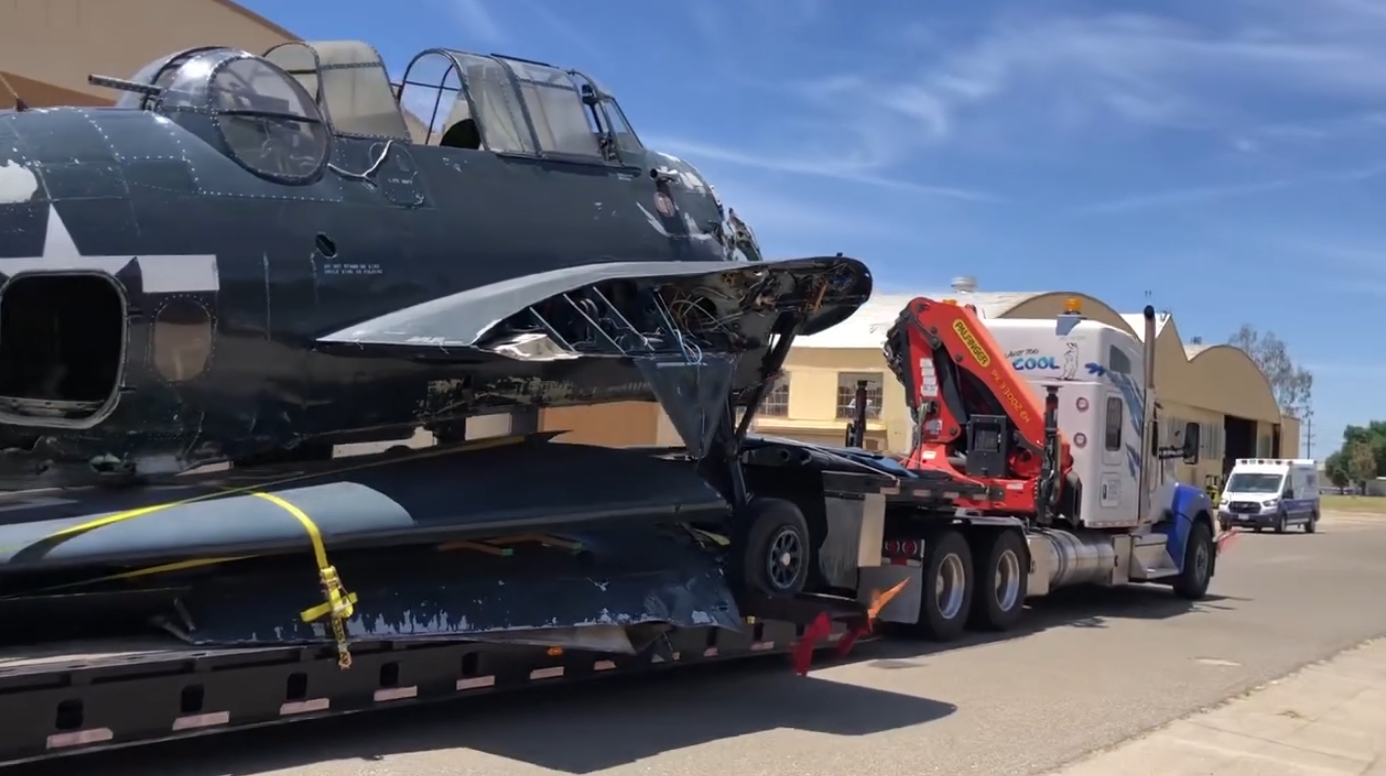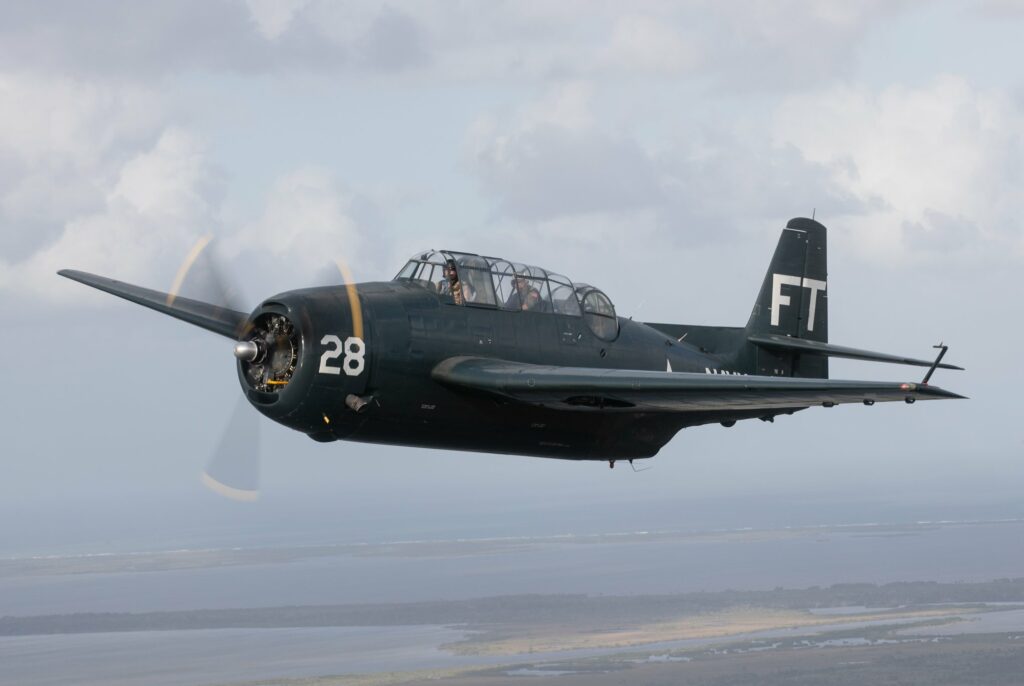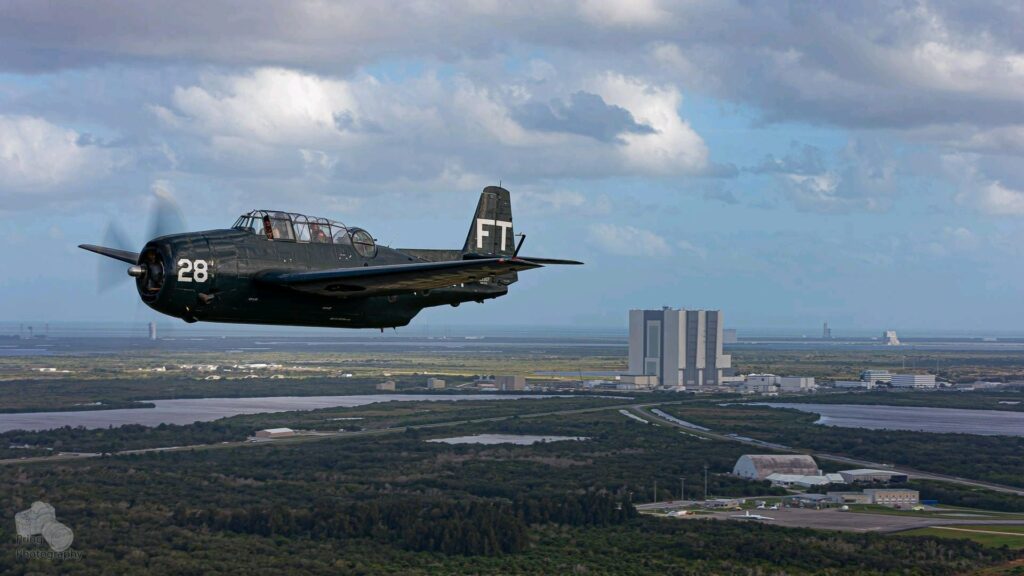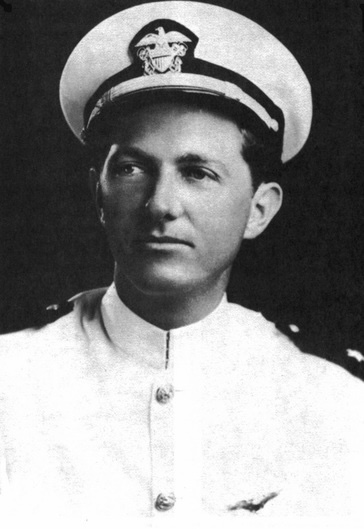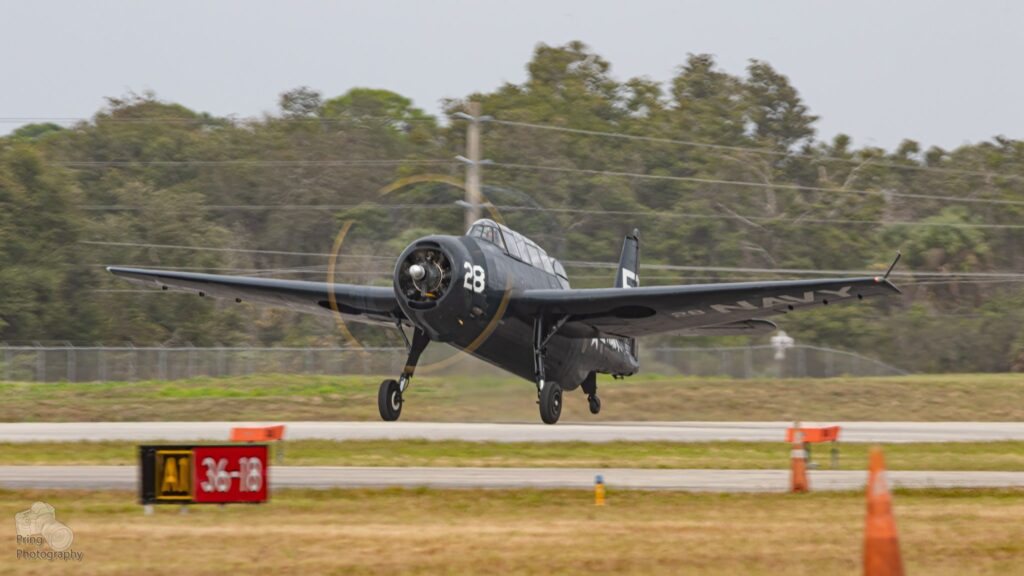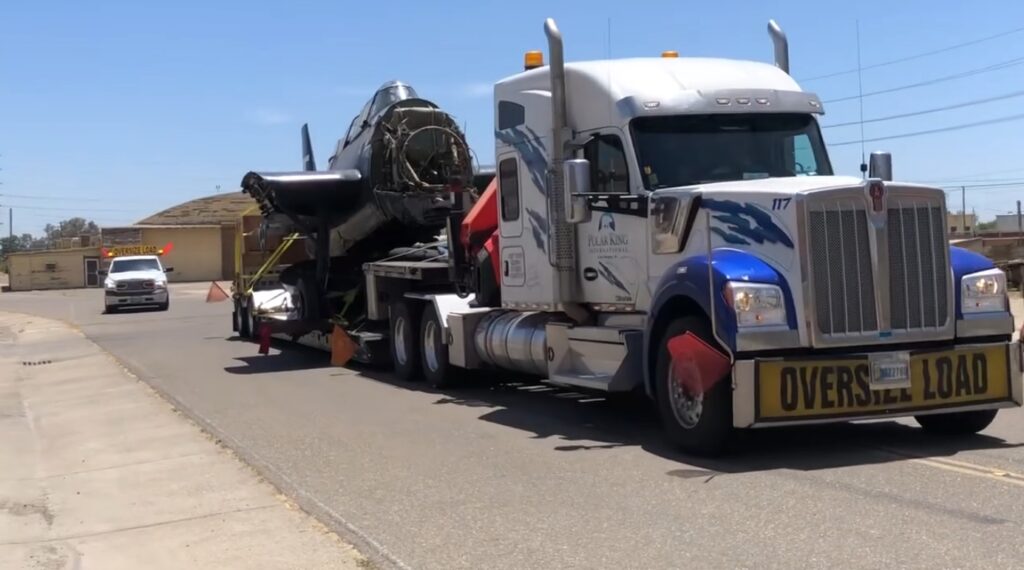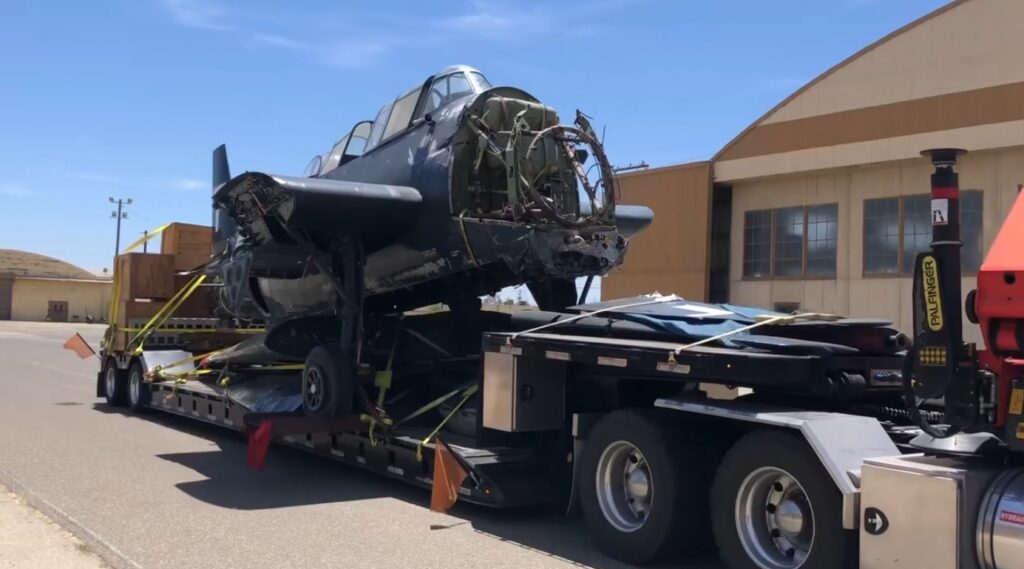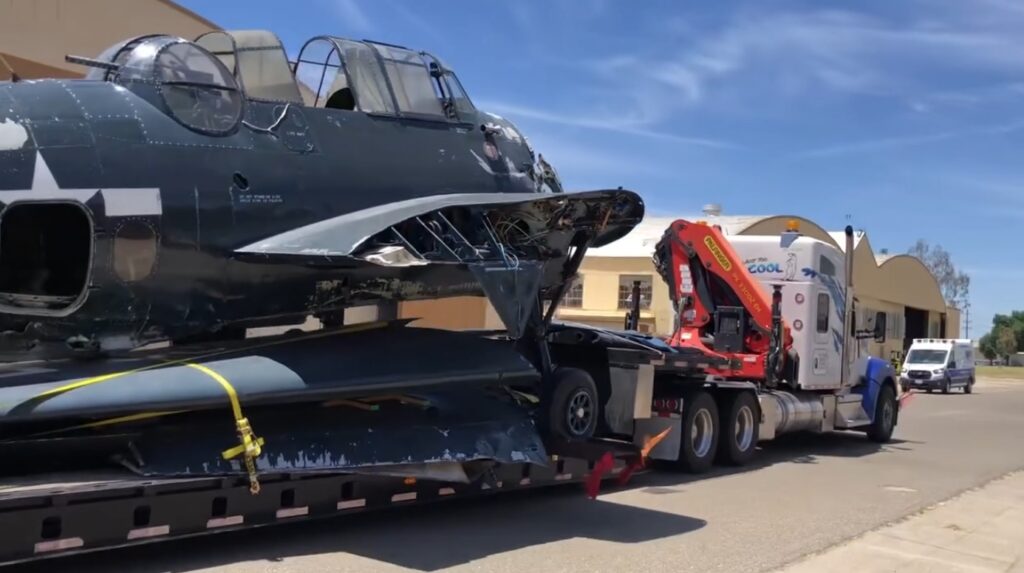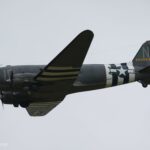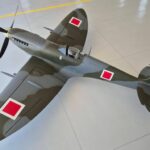By Adam Estes
The scene seemed to be snatched right out of a World War II-era newsreel or a wartime epic movie, but it was captured on April 17, 2021, by dozens of beachgoers on Cocoa Beach. A TBM Avenger with its flaps down and nose up suddenly appeared and ditched in the ocean less than fifty yards from shore. Overnight, the videos went viral and incited a flurry of speculation as recovery specialists discussed the best way to extract the Avenger from the surf. Even as the aircraft was being pulled from the surf, the damage from its prolonged, however brief, exposure to saltwater was just as much a subject of speculation as what caused the pilot to ditch.
Three years on any hope that the aircraft could be returned to airworthy condition have been dashed at the Castle Air Museum in Atwater, California. With the Avenger’s arrival at Castle, it marks yet another chapter in the life of an aircraft that has led a remarkable life, and which is now guaranteed to remain intact.
This story began when this aircraft, Eastern Aircraft TBM-3E Bureau Number (BuNo) 91188, was accepted by the Navy on July 13, 1945. The aircraft led a largely uneventful service life, having served in aircraft pools in Alameda, Tillamook, San Diego and Norfolk. During this time the torpedo bomber was converted to a TBM-3U and assigned to Utility Squadron 10 (VU-10) at Guantanamo Bay, Cuba. Shortly after returning to the States, the aircraft was stricken on July 31, 1956, and immediately acquired by the US Forestry Service, and registered as N108Z. The Forestry Service flew the aircraft as an air tanker out of Davis, California as tanker number #08.
In 1966, the aircraft was transferred to the Georgia Forestry Commission, re-registered N108Q, and operated out of Macon, Georgia as tanker number #2. The aircraft, however, was not free from accidents, as on November 14, 1971, the aircraft suffered a gear collapse at Cushing Airport, Oklahoma. The pilot was uninjured, and the aircraft was repaired. Four years later, though, on June 16, 1975, the aircraft took off from Massena, New York bound for Sault Ste Marie, Michigan, when the aircraft suffered total engine failure and was forced to land wheels up in a swamp. Again, the pilot was able to walk away from the incident, but the aircraft needed repairs.
After filing through a few private owners, N108Q was acquired by the now-defunct Georgia Historical Aviation Museum in Stone Mountain in 1989, and it would remain with this organization until 2002 when it was acquired by the Valiant Air Command Inc., Warbird Air Museum in Titusville, Florida, where it would undergo an extensive restoration that was to last 18 years. One of the largest factors in the length of time in the restoration was the fact that over the aircraft’s course as a fire tanker, prolonged exposure to fire retardant chemicals caused severe corrosion in the lower portions of the aircraft’s fuselage, so museum volunteers had to battle the corrosion on the aircraft and replace the old skins and components with new equivalents.
On April 25, 2015, the freshly restored Avenger made its first post-restoration flight and began a long flight test program. The aircraft would attract a lot of attention among the local warbird community, as the museum chose to paint the aircraft as TBM-3E BuNo 23307, FT-28, an Avenger based at NAS Fort Lauderdale and flown by Lt. Charles Carroll Taylor. This was the Avenger that led four other TBMs that took off from Fort Lauderdale on what was supposed to be a routine training flight on December 5, 1945, under the callsign Flight 19. When the flight vanished without a trace it fueled the then-growing legend of the Bermuda Triangle and inspired the opening scenes of Steven Spielberg’s 1977 epic film Close Encounters of the Third Kind. Given the museum’s Titusville location being just up the coast up from Fort Lauderdale, the paint scheme choice is a fitting tribute to the 27 men lost on that day and still await recovery.
Over the next couple of years, the aircraft underwent further flight tests and was ready to make public appearances after nearly 18 years of restoration. Indeed, the aircraft was featured in the Discovery Channel series Expedition Unknown for an episode on the Bermuda Triangle and some of the most prominent disappearances attributed to this region, with Flight 19 being one of the most prominent cases featured. Despite nationwide lockdowns from the COVID-19 pandemic, the museum kept its doors open and found ways to comply with social distancing guidelines while displaying the Avenger and its other aircraft to the public. However, an event in 2021 would alter the trajectory of TBM-3 BuNo 91188, and it would be the subject of public attention and controversy.
The weekend of April 17-18, 2021, the Cocoa Beach Air Show, held at Patrick Space Force Base (formerly Patrick Air Force Base), held great promise for the museum. In addition to the typical aerobatic routines and military demonstration flights, the museum put a number of its warbirds on display, including C-47 Tico Belle, SNJ, N2S Kaydet, and of course the Avenger. During the demonstration, however, 91188 suffered an engine failure while off the coast of Cocoa Beach. The runway at Patrick was close but with the aircraft quickly losing speed and altitude, the pilot, who was the only occupant of the craft, feared he might not clear Highway A1A, which stood between him and Patrick. This left him with one option- ditching in the ocean. Once the aircraft came to a halt, the pilot climbed out of the cockpit and waded to shore with the assistance of tourists who didn’t continue to film with their smartphones.
In a few hours, the scene had been secured and the Avenger sat half-submerged in the surf, but that wasn’t the only issue. Over the course of the day, the Avenger drifted with the tides, which also filled the aircraft with sand. Since the left wing had dug itself into the sand while the right-wing stuck out, more sand filled up the crevasses of the left wing, further weighing the aircraft down. The soft sand, now closed to beachgoers, would be insufficient to hold the weight of any crane with the capacity to lift the plane from the water. So, the decision was made to attach cables to the aircraft and drag its tail first onto the beach, but this was not accomplished until the next day once recovery equipment could be mobilized. Once the aircraft was dragged to a nearby parking lot, it was lifted into the air by a mobile crane lowered onto a flatbed trailer and driven back to Titusville. Once the sand and seawater were removed the landing gear was extended thus allowing the aircraft to sit on its gear again.
Due to the prolonged exposure of the aircraft to corrosive saltwater, both insurance and the FAA declared the airframe to be a total loss. Following a thorough cleaning museum officials stated in part, “…massive internal structural damage from nose to tail as well as destruction of all magnesium parts due to saltwater corrosion. During this time period a few firms visited to look at the aircraft to potentially buy and restore it. The firms determined that rebuilding to flight status or static display would be cost prohibitive and time-consuming.” In the latter part of 2021, a private entity made an offer to purchase the aircraft AS-IS and display it in its “as ditched” condition. The offer was accepted and from then on, the aircraft was out of their hands and placed into storage.
Endless speculation ensued over where N108Q would wind up next, with one idea being that it would be exported to Russia. Indeed, the Ural Mining and Metallurgical Company (UMMC) established a large museum complex in 2005 in the town of Verkhnyaya Pyshma, just north of Russia’s fourth largest city, Yekaterinburg. The UMMC museum complex features everything from automobiles and locomotives to artillery and military aircraft. The Wing of Victory exhibition center was opened in 2021 and features many aircraft from World War II, including an A-20 Havoc, PBY Catalina, and B-25 Mitchell purchased from the United States for exhibition to represent examples flown by the Soviet Air Force during the Great Patriotic War, as the Second World War is referred to in Russia. However, after Russia invaded Ukraine, the aggressor was sanctioned by the West, and the Avenger retreated back into obscurity without leaving the United States. But at the end of May, the aircraft suddenly re-emerged on the other side of the United States at the Castle Air Museum (CAM) in Atwater, California.
As we have covered in previous articles, CAM is located at Merced-Castle Airport (KMCR), formerly Castle Air Force Base, which served as a Strategic Air Command (SAC) base during the Cold War. They have recently gained attention for their ongoing restorations of their extensive static collection of aircraft, from the B-58 Hustler from the now-shuttered Chanute Air Museum to the F-117 Nighthawk dubbed The Toxic Avenger. Behind the scenes, CAM was able to acquire the damaged Avenger, presumably from the same entities who purchased the aircraft from the Valiant Air Command. On May 30, 2024, TBM-3 91188 arrived at its new home on the back of a flatbed trailer towed by a big rig from Indiana-based Polar King International. Today, the Avenger sits in the museum’s restoration hangar, where it will be restored to static display.
While the event that led to 91188’s permanent grounding was unfortunate, it could have been much worse and the aircraft’s arrival at Castle represents the most favorable outcome to this story. The Valiant Air Command Inc., Warbird Air Museum are now in touch with the Castle Air Museum and will aid and advise where it is necessary. Meanwhile, Greg Stathatos, founder of B-17 Archaeology and a restoration volunteer for both the March Field Air Museum in Riverside, California and the Castle Air Museum, will help lead the restoration of 91188, alongside other dedicated volunteers from near and far. The restoration has only just begun, and the project will likely be a multi-year effort, but 91188 is in good hands and we will provide updates on this and other ongoing projects at the Castle Air Museum.
Special thanks to the Valiant Air Command, the Castle Air Museum, and Greg Stathatos in this article.







